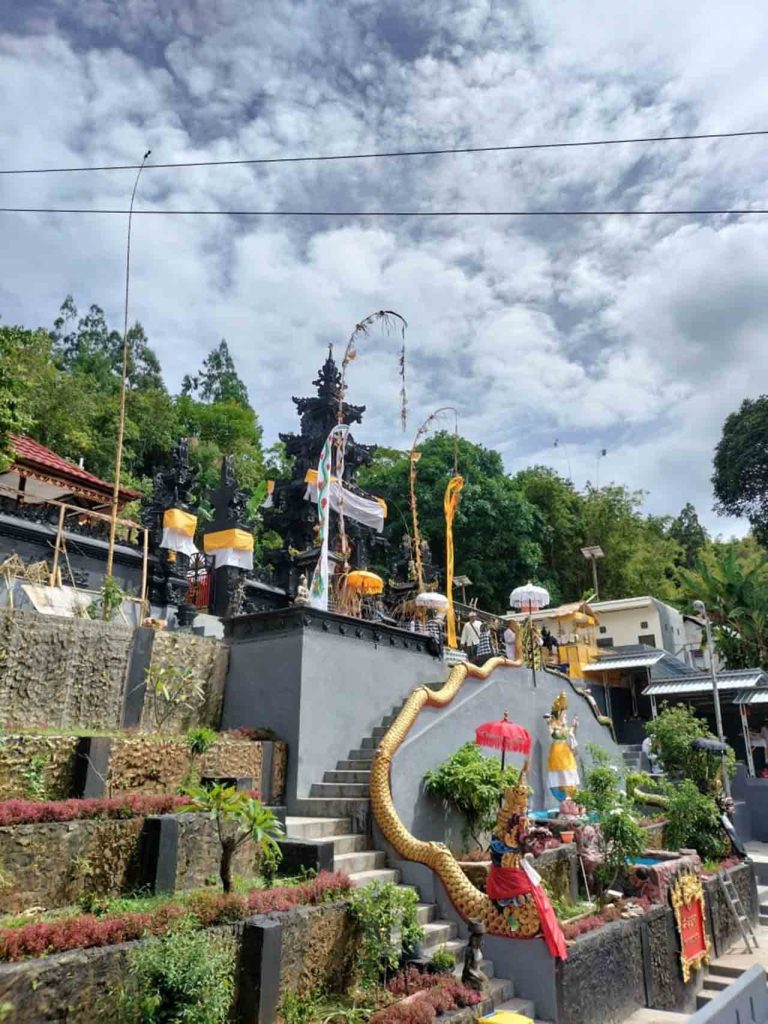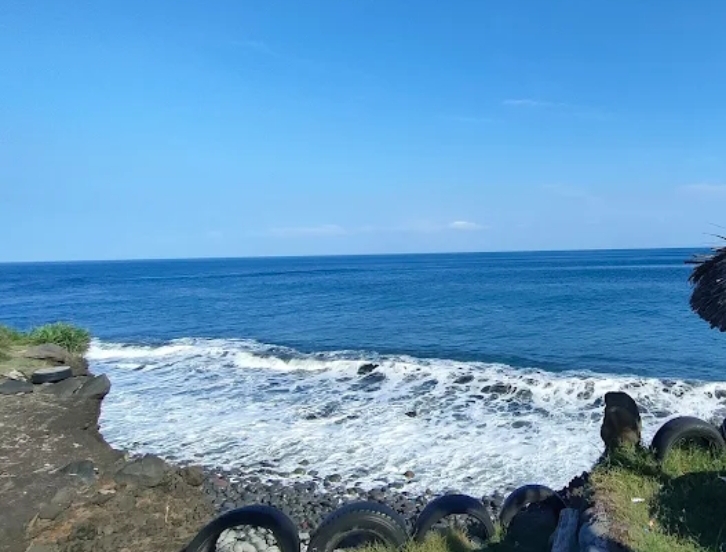Goa Gajah, often referred to as the “Elephant Cave,” is an ancient cave and sacred site located in Bedulu Village, Blahbatuh District, Gianyar Regency, Bali.
Approximately 27 kilometers from Denpasar, this historical site dates back to the 11th century and holds deep cultural, religious, and archaeological significance.
The name Goa Gajah has sparked various interpretations. Some believe it stems from the carvings of a giant face above the cave entrance, which resemble an elephant.
Another theory suggests that it is derived from the presence of a Ganesha statue inside the cave, Ganesha being the Hindu god with an elephant head.
Historical texts also mention “Lwa Gajah,” which appears in the 14th-century Kakawin Nagarakretagama written by Mpu Prapanca, referring to the ancient rivers and settlements in the area.
Goa Gajah was rediscovered by Dutch officials during the early 20th century. In 1923, L.C. Heyting reported the discovery of statues of Ganesha, Trilingga, and Hariti to the colonial government.
This prompted further research led by Dr. W.F. Stutterheim in 1925. By 1954, the Indonesian Department of Antiquities, under the guidance of J.L. Krijgman, conducted extensive excavations and found an ancient bathing pool with six statues of female figures holding water spouts, believed to cleanse visitors spiritually.
The main cave entrance is intricately carved from solid rock, featuring a combination of floral motifs, demonic faces, monkeys, and boars.
This intricate design measures 6.75 meters in height and 8.6 meters in width, with a narrow entrance leading inside.
The face carved above the entrance appears menacing, possibly designed to ward off evil spirits.
Inside the cave, the layout resembles the letter “T,” with passageways leading both east and west.
The walls are lined with small niches, once used for meditation. At the western end, there is a statue of Ganesha, while the eastern end houses Trilingga, symbolizing Lord Shiva.
One of Goa Gajah’s most iconic features is the sacred bathing pool located in front of the cave.
This pool consists of three smaller basins, each adorned with statues of apsaras (celestial maidens) holding water vessels.
The water flowing from these statues is considered holy and is believed to have purifying properties.
The pool was uncovered during excavations in the mid-20th century. Initially buried under soil and debris, it was carefully restored to reflect its original structure.
The seven statues represent the Sapta Nadi, symbolizing the seven sacred rivers of India, including the Ganges, Saraswati, and Yamuna.
Goa Gajah is unique in that it reflects both Hindu and Buddhist elements.
While the northern part of the site is dedicated to Hindu worship, featuring statues of Shiva, Ganesha, and Trilingga, the southern area, known as Tukad Pangkung, contains Buddhist relics.
Among the discoveries are stupa fragments with intricate carvings and reliefs depicting Buddha figures.
These remnants suggest that the site was once a place where Hindu and Buddhist communities coexisted harmoniously.
The Tukad Pangkung area also features the remains of a large stupa with multiple tiers, believed to date back to the 10th century, making it older than the cave itself.
One of the fascinating statues at Goa Gajah is that of Hariti, a figure from Buddhist mythology.
According to legend, Hariti was once a demon who devoured children but later transformed into a protector of children after converting to Buddhism.
In Balinese folklore, Hariti is known as Men Brayut and is depicted holding several children in her arms.
Goa Gajah remains a popular destination for both tourists and devotees. Visitors can explore the cave, marvel at the ancient carvings, and meditate in the tranquil surroundings.
The sacred bathing pool and lush greenery add to the site’s serene atmosphere, making it a place of both historical exploration and spiritual reflection. (BT)





